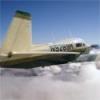Weird failure this week, just an FYI.
-
Members Online
- Marc_B
- Andy95W
- dzeleski
- ta2too
- Guy123
- Scottknoll
- Pinecone
- redbaron1982
- Woodslayer
- tankles
- A64Pilot
- Marcopolo
- TCC
- N201MKTurbo
- AMG880
- Bob K
- Guillaume
- 1988-JP
- bluehighwayflyer
- Carden260
- Jim Peace
- toto
- warren.huisman
- camshaft
- boboxa9895
- Mister_Bevilaqua
- Flyler
- eman1200
- Aaviationist
- slowflyin
- chan65
- Jake@BevanAviation
- TangoTango
- Gregarious
- alextstone
- jetdriven
- Greg Ellis
- CCAS
- GeeBee
- Rsmithref


Recommended Posts
Join the conversation
You can post now and register later. If you have an account, sign in now to post with your account.